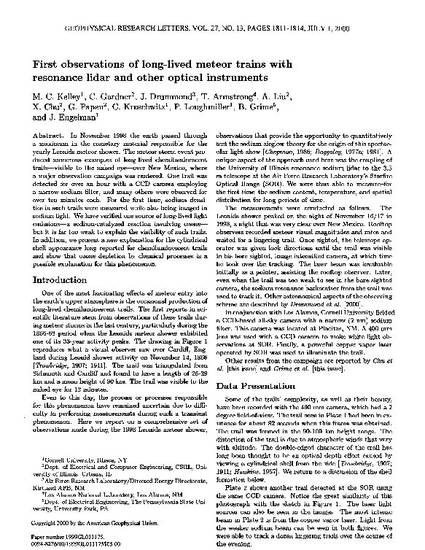
In November 1998 the earth passed through a maximum in the cometary material responsible for the yearly Leonids meteor shower. The meteor storm event produced numerous examples of long-lived chemiluminescent trails--visible to the naked eye over New Mexico, where a major observation campaign was centered. One trail was detected for over an hour with a CCD camera employing a narrow sodium filter, and many others were observed for over ten minutes each. For the first time, sodium densities in such trails were measured while also being imaged in sodium light. We have verified one source of long-lived light emissions--a sodium-catalyzed reaction involving ozone--but it is far too weak to explain the visibility of such trails. In addition, we present a new explanation for the cylindrical shell appearance long reported for chemiluminescent trails and show that ozone depletion by chemical processes is a possible explanation for this phenomenon.
Available at: http://works.bepress.com/alanliu/63/
